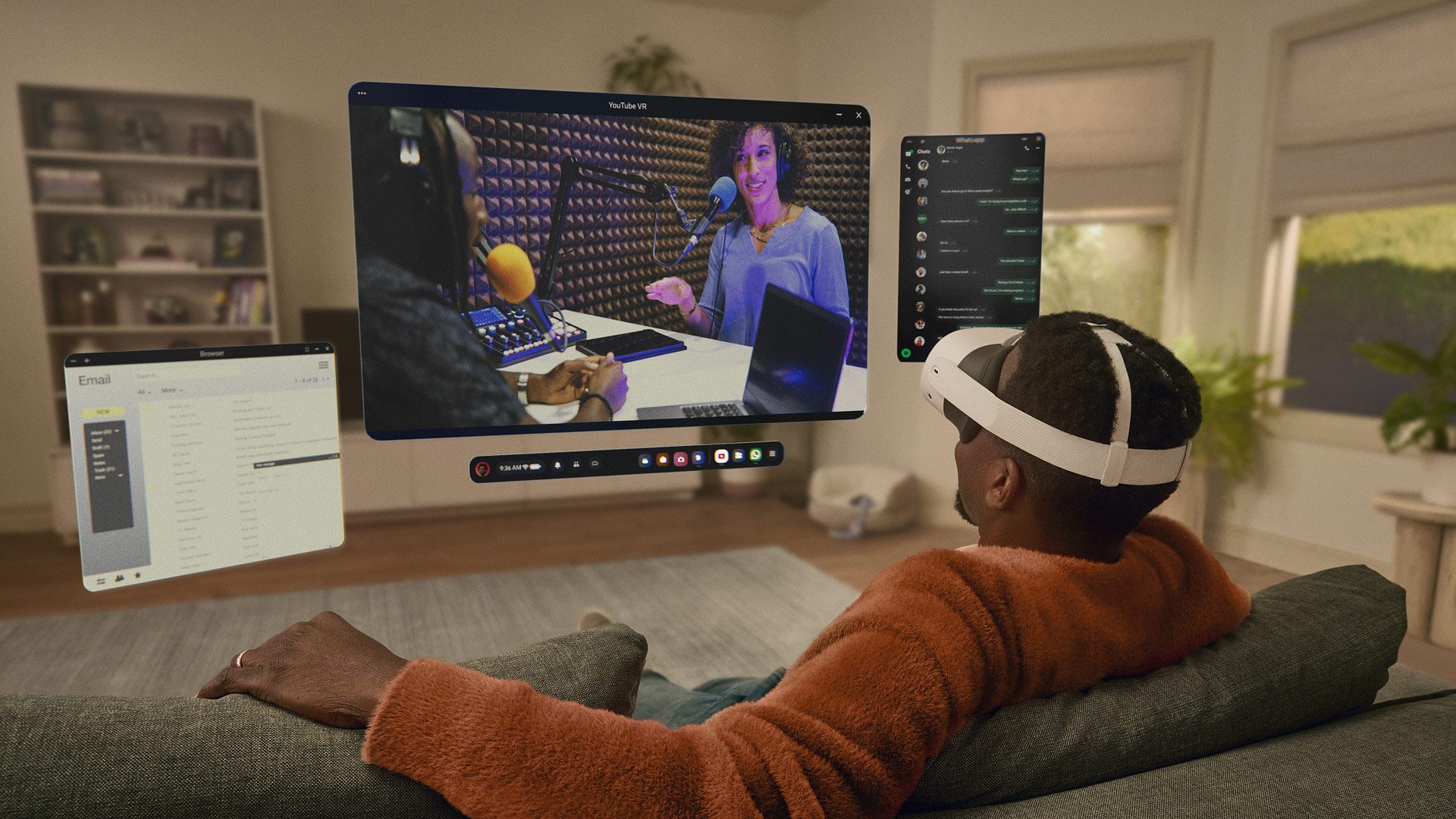Meta continues its reign as the XR industry’s dominant player, with its most recent moves signaling a shift into a new era for the company—and thus the industry at large. This year saw the introduction of the Meta Orion AR glasses prototype and the Quest 3S headset—two pieces of hardware that are not only crucial to Meta’s future but will be pivotal in shaping the industry’s direction as a whole.
One of Meta’s most significant announcements this year was the unveiling of the Meta Orion AR glasses prototype. Meta has long been signaling its ambitions in the AR space, and the Meta Orion prototype represents a major step toward that vision. With a compact form-factor and an impressive 70-degree field of view, Meta is aiming to push the boundaries of what AR hardware can achieve.
Meta’s Orion AR glasses stand as a benchmark for the state-of-the-art in AR glasses today. Unlike similarly sized AR devices—which suffer from a narrow field-of-view that make content appear constrained—Meta Orion’s 70-degree FoV is just scraping the boundary of ‘wide enough to be useful’. Achieving a compact form-factor and a wide field-of-view in the same package is crucial for making AR feel more seamless and practical in daily use.
It will be years yet before Meta ships something like Orion, but it’s an intentional ‘flag in the ground’ moment for the company.



Yes, wired PCVR streaming works, but only for Meta’s own streaming software. If you want to use Steam Link, Virtual Desktop, ALVR or Wivrn, maybe for the unique features they afford, you are stuck with wifi unless you use hacky adb commands which the vast majority of people are not going to do.
What I meant by the USB NIC point is that the quest has a usb port to connect to a computer, but it can also connect to peripherals like a keyboard or controller. Weirdly though, the quest will refuse to use a USB NIC even though android normally would use it.
All of those things you mentioned are specifically made for wirelessly streaming so of course they will use wifi… That’s their primary function and they don’t really offer many differences from the official wireless method other than finer control over the bitrate and such. If you’re physically plugged in, they aren’t needed.
And again, you can use SteamVR (not Steam Link, which is their remote play service) with just the cable. No wifi needed. I’m literally doing it right now.
I think they’re trying to say you cant create/buy someone else’s wireless PCVR hardware solution. As in someone makes a program and 2 USB adapters to line of sight transmit wirelessly, so it’s just plug and play. No tweaking settings or worrying about networking to minimize latency.